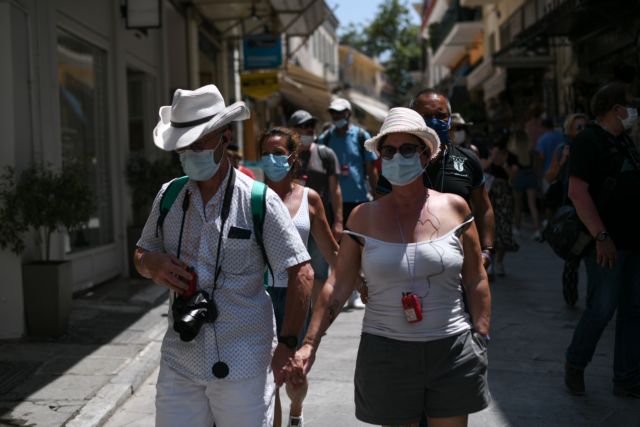Vacationers huddling on ships and aircraft for a visit to some Greek summer paradise will be exposed without any shield to the new subvariants of the virus.
Since the new sub-variants are evading vaccines and new vaccines are still delayed, it seems that the only protective measures against the coronavirus are masks, distances and hygiene rules.
At the same time, scientists warn that we are not done with the coronavirus yet, as even though Omicron 4 and Omicron 5 are highly contagious variants, it does not mean that more contagious mutations may yet appear.
Each new variant is even more contagious
The virus is mutating and according to the first estimates, the new variants will be more contagious, but it remains unknown whether they will cause serious hospitalizations. After all, experts consider it a given that starting this fall we will have new variants of the virus.
LSE professor Ilias Mosialos estimates that there will certainly be new variations, the qualities of which cannot be ascertained until they appear. As he noted: “we have in at least 10 countries the appearance of BA.2.75 which was detected for the first time in India. This subvariant exhibits changes that lead some to recommend increased epidemiological surveillance, considering that BA.2.75 could potentially be of greater concern than the BA.5 subvariant. But for this to happen, BA.2.75 should be so much more contagious that it surpasses BA.5. At the moment we don’t have such data, however.”
According to experts, the adaptability of the Omicron mutation is estimated to be about nine times greater than that of A. In particular, Omicron subtypes BA.4 and BA.5, are more contagious than subtypes BA.2 and BA.1 .
Prof. Magiorkinis: The unvaccinated should be careful
At the same time, the professor of epidemiology Gikas Majorkinis, in a post about the severity and immunogenicity of variants 4 and 5, said that given the vaccination and the previous disease in the various populations in the world, the probability of severe infection is lower than with previous strains.
“We should not assume that the milder profile of Omicron variants is solely due to prior disease as there were variants that did not show mildness even after prior disease. From the clinical data it is reported that patients have a high rate of febrile infection without hypoxia. Reducing the chance of hypoxia is a very positive thing. Having a fever is not necessarily a bad sign. It shows in principle that there is a mobilization of cytokines, mainly interferons which will logically lead to better immunogenicity. Indeed, it is reported that strains O1 and O2 did not have strong immunogenicity. With the mentioned profile, I believe that O4, O5 will cause a higher and stronger immunity than O1 and O2.
However, the unvaccinated in any case should be careful, the best way to build up a safe and adequate immunity is still vaccination.”
New vaccines from October
Ilias Mosialos also spoke about the new vaccines for the coronavirus that will be released from October and will deal with the new variants of the virus. According to the professor, last week the US Food and Drug Administration (FDA) recommended that the manufacturers of the COVID-19 vaccines change the design of the booster vaccines that we expect for the fall.




